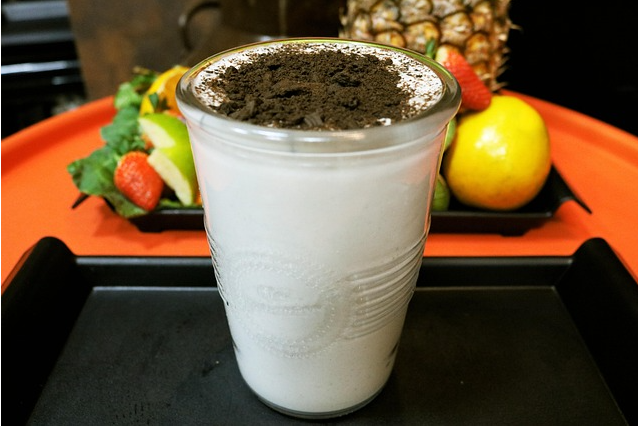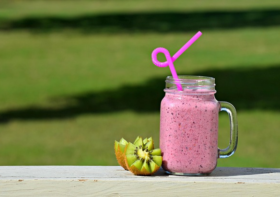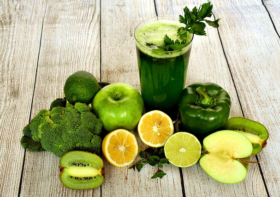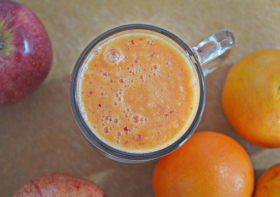Low-calorie chocolate protein shake recipes for a healthy diet

- Key Takeaways
- What Defines Low-Calorie Chocolate Protein Shakes?
- Unpacking The Real Benefits
- How To Craft Your Shake
- The Sustainability Question
- Timing Your Shake Intake
- Common Misconceptions Debunked
- Conclusion
- Frequently Asked Questions
- What makes a chocolate protein shake low-calorie?
- Are low-calorie chocolate protein shakes suitable for weight loss?
- Can I use plant-based protein in low-calorie chocolate shakes?
- When is the best time to drink a low-calorie chocolate protein shake?
- Are low-calorie chocolate protein shakes good for meal replacement?
- Do low-calorie chocolate protein shakes taste good?
- Are low-calorie chocolate protein shakes safe for everyone?
Key Takeaways
- Low-calorie chocolate protein shakes combine premium proteins with cocoa or chocolate powders, delivering deliciousness without the additional calories or sugar.
- With the right protein — whether whey or plant-based — supporting muscle recovery, satiety, and overall health while accommodating different dietary preferences.
- Keeping calories in check means using unsweetened bases, natural sweeteners, and mindful portions so you get the flavor and nourishment without the excess.
- Boost vitamins, minerals, and fiber by adding fruits, vegetables, and superfoods like chia seeds or spinach.
- Sustainable decisions, such as using biodegradable packaging and locally sourced ingredients, make your shakes all the more beneficial for you and the environment.
- Protein shakes are best consumed before or after workouts, as a meal replacement or a healthy snack, keeping you energized and satiated throughout the day.
Our low-calorie chocolate protein shakes provide a delicious method of achieving daily protein intake goals without a high caloric intake. Most folks choose these shakes for weight management, muscle recovery, or a convenient snack. They tend to taste decadent but remain airy, making them easy to incorporate into any diet. With so many kinds out there, there is a shake for every palate. The low-down low-calorie choco protein shake guide below breaks down the best picks.
What Defines Low-Calorie Chocolate Protein Shakes?
What Are Low-Calorie Chocolate Protein Shakes? Low-calorie chocolate protein shakes are designed for people who crave taste, fullness, and nutrition without the extra calories. Low-calorie chocolate protein shakes generally contain 110 to 120 kcal per serving, 30g protein, and typically only 1g sugar. Most recipes use straightforward ingredients, emphasizing clean protein and easy preparation for any lifestyle.
Primary ingredients often found in low-calorie chocolate protein shakes:
- Protein powders (whey, pea, soy, casein, egg, hemp)
- Cocoa powder or chocolate protein powder
- Low-calorie liquid bases (almond milk, water)
- Natural or no-calorie sweeteners
- Optional: berries, spinach, oats, nut butter
1. The Protein Source
Health and taste start with selecting the right protein powder. Some prefer whey, which blends easily and promotes rapid muscle recovery. Others opt for pea or brown rice protein for a plant-based, non-dairy alternative. Both have their advantages. For instance, pea protein is gentle on the stomach and has a subtle flavor, whereas whey is complete and quick-digesting. Chocolate protein shakes come in different protein amounts, but most hover around 30 grams per serving, providing a potent hit for satiety and muscle recovery. Premium protein is occasionally third-party tested for purity and safety, which establishes confidence for consumers who are thoughtful about what they ingest.
2. The Chocolate Element
One of the great things about chocolate is that both cocoa powder and chocolate protein powder are great options for infusing chocolate flavor. Cocoa provides an intense, rich flavor and chocolate protein powder can add sweetness without adding a lot of sugar. Dark chocolate is not just a treat; it’s packed with antioxidants, which help combat cell damage. For those who want to mix things up, throwing in some cinnamon, coffee or even vanilla can help yield a chocolate shake that’s just right.
3. The Calorie Control
Low-calorie shakes are designed to fit into balanced diets. Most keep calories low by avoiding added sugars and using light milk or water. Be aware of sneaky sugars since even a gram or two can quickly accumulate. Substituting high-calorie add-ins for berries or spinach would work nicely and still keep the shake delicious. Portion size is important. Small cups can keep calories under control, while larger sizes make a snack into a meal.
4. The Nutritional Boost
Adding vitamins and minerals can help round nutrition out. Others add in leafy greens or berries for additional fiber, antioxidants, and vitamins. Oats can contribute both texture and slow-burning carbs. Fiber helps you feel satiated and aids digestion. The best shakes have a combination of protein, carbs, and healthy fat for balance.
5. The Texture Secret
Almond milk and yogurt all provide shakes with a creamy texture. The addition of ice or frozen fruit gives the drink a thick, cold consistency, almost like a dessert. Nut butters provide additional creaminess and a nutty taste without too many additional calories. How blended a shake really does matter. Blend on low at first, then high until smooth and lump-free.
Unpacking The Real Benefits
Low-calorie chocolate protein shakes, for instance. They mix health, ease and versatility, assisting individuals in facing various health objectives. For muscle heads, weight managers, or just grabbing a fast bite, these shakes often do the trick.
Muscle Support
Protein shakes assist the body in repairing and increasing muscle growth post-workout. Post-workout, muscles require protein to repair microtears and become stronger. Consuming a shake immediately post-workout can quicken this. The body absorbs most efficiently when it receives approximately 25 to 30 grams of protein per meal, not everything at once, so swilling a shake as you walk out of the gym is just smart. Amino acids in these shakes—like leucine, isoleucine, and valine—are muscle repair MVPs. Even if you’re not an athlete, these shakes can help keep your muscles strong, which is important for seniors or anyone who struggles to consume adequate protein with their meals. The truth is, a quick mix of chocolate protein powder, oat milk, and a banana makes for a speedy post-workout beverage to help your muscles rebound.
Satiety Control
Protein shakes will silence hunger and curb cravings, which is great for calorie watchers. Protein has a reputation for making people feel full longer than fat or carbs. Put some chia seeds or oats in a shake and you add fiber, which helps even more with satiety. Others swap out a meal for a protein shake to reduce calories but still feel satiated. For active schedules, a shake at lunch can curb afternoon noshing and stabilize energy.
Metabolic Health
Sufficient protein is not just about supporting muscles. It helps your body burn calories more effectively. Protein requires more energy to digest than either carbs or fat, so a protein-heavy shake means you’re burning more calories by eating. Packaged balanced shakes can be used as part of weight loss programs and avoid the typical diet or muscle loss metabolic slowdown. Research indicates that even if you’ve lost weight, consuming a higher amount of protein can prevent those few extra pounds from sneaking back on. Piling on chocolate protein shakes is a great way to keep metabolism healthy when paired with movement and strength training.
Nutrient Convenience
For most, time is scarce! Chocolate protein shakes are probably the easiest snack or meal replacement to mix and take on the go. Prepping some of the ingredients on weekends—scooping powder, slicing banana, freezing spinach—simplifies weekday mornings. These shakes fit many diets: vegan, dairy-free, gluten-free, or high-protein. They just happen to travel well, which is making them become a go-to for busy professionals, students, or even parents. Although they help address nutrition gaps, shakes shouldn’t be your sole source of protein. We all get what we need from real food in most cases, but shakes are convenient for some folks with elevated needs or difficulties getting enough down.
How To Craft Your Shake

By taking a few easy steps, anyone can indulge in a healthy shake that suits both their goals and their own taste buds!
-
Begin with a liquid base like almond milk, coconut milk, or dairy. Unsweetened almond milk is popular for its minimal calories and mild flavor, whereas coconut milk contributes a tropical richness but can be a bit higher in calories. Dairy milk adds additional protein but might not work for those with lactose intolerance. Always check for unsweetened to keep sugars low.
-
Sprinkle in a scoop of protein powder. Whey protein, for example, mixes quickly and has a creamy texture, or go plant-based with pea or rice protein if you’re dairy-averse. Chocolate, vanilla, and other flavor powders taste great and don’t add any more sugar. Read labels to avoid fillers or artificial sweeteners.
-
To make it creamier and add some protein, blend in a spoonful of Greek yogurt or cottage cheese. These can bulk up the shake and add a creamy texture. Ice cubes can be thrown in to cool and thicken the shake without adding calories.
-
Layer in natural sweetness. Stevia, monk fruit or a quick splash of maple syrup can sweeten the shake without the calorie overload. Include fruits such as bananas or berries for sweetness and fiber. Keep in mind that fruits increase the sugar content. Taste while you blend and add sweetener as necessary.
-
Supercharge nutrition with superfoods. Chia seeds and flaxseeds contribute omega-3s and can thicken the shake if left to sit for a few minutes. Spinach sneaks in for a nutritional kick without much flavor alteration. Cocoa powder intensifies chocolateiness and adds antioxidants.
-
Pay attention to order when adding ingredients: start with liquids, then powders, and add solids last. This allows blades to catch powders and mix everything uniformly. Pulse for 30 seconds and you’re in business. If it’s still chunky, give it another blend so it’s smooth.
-
Maintain a list of favorite shakes for easy reference. Record what works: almond milk with chocolate whey, banana, chia, and cocoa, for instance. Experiment with new twists every week to keep shakes fun. Adjust the balance of ice or yogurt for varied thickness.
Choose Your Base
Almond, coconut and dairy milk are the three most common liquid bases for shakes. Almond milk is a favorite among calorie counters, as it can have less than 20 kcal per 100ml if unsweetened. Coconut milk tastes creamy but is sometimes higher in fat and calories, so be sparing. Dairy milk may work for those seeking a protein punch, but watch the fat content to keep the calorie count in check.
Lactose intolerant or dairy allergic people can use oat milk, soy, or rice milk. These non-dairy bases mix well with most shake recipes. Always opt for varieties that contain no added sugars. Unsweetened bases keep shakes low in calories and allow you to dictate the flavor with your own add-ins.
Select Your Protein
Protein powder serves as the core of any protein shake. Whey, with its rapid absorption and creamy texture, has been a go-to ingredient for athletes and anyone looking to support muscle growth. Plant-based proteins, such as pea or rice, are perfect for those on vegan or dairy-free diets. A few powders are available in chocolate flavor, which can enrich the flavor of your shake without adding calories. Double-check the ingredient list to ensure there are no sneaky sugars or fillers.
Experiment with different brands and types of protein powder to see what mixes best with your base and add-ins. Some of us like a neutral protein, while others like pushing the flavor envelope. Some protein powders make shakes thick or gritty, so play around to find your perfect blend!
Add Natural Sweetness
Natural sweeteners allow you to determine the sweetness of your shake. Stevia and monk fruit are popular for amping up the sweetness without amping up the calories. Maple syrup is an option if you’re feeling fancy, but parade around with only a drizzle so you don’t add too many sugars. Bananas and berries can sweeten and thicken the shake while providing vitamins and fiber.
Balancing the sweetness requires a little experimentation. Add a little at first, blend, and taste. If it’s not sweet enough, put a little more in. We all have different palates, so experiment with pairings until you discover your preferred blend.
Boost With Superfoods
Superfoods deliver bonus nutrition and can transform your shake’s texture and flavor.
They may be tiny, but chia seeds are mighty, contributing fiber, protein, and good fats. When blended, they absorb liquid and form a gel-like consistency that thickens the shake. Spinach can be tossed in for iron and vitamins. Its mild flavor gets lost in the chocolate. Cacao powder adds a deep chocolate flavor and antioxidants as well. Flaxseeds provide omega-3s and add staying power to your shake.
Popular superfoods for chocolate shakes:
- Chia seeds
- Flaxseeds
- Spinach
- Cacao or cocoa powder
- Maca powder
- Spirulina
Go easy with one or two superfoods in each shake. Experiment to find exciting new favorites. Superfoods can alter both flavor and nutrition, so note what works best.
The Sustainability Question

Low-calorie chocolate protein shakes may seem like a simple indulgence, but their influence extends well beyond flavor and nutritional value. From the fields where ingredients are cultivated to how these shakes arrive in your glass, each step impacts the earth. Readers are increasingly aware that their choices have an impact, and brands are being called upon to be more transparent about their environmental initiatives.
Ingredient Sourcing
Opting for organic non-GMO ingredients reduces your exposure to pesticides and to genetically modified crops. Such decisions reinforce agricultural practices that typically utilize reduced water and chemicals. When a protein shake includes plant-based protein, think pea or rice protein, it can reduce methane emissions associated with dairy or animal-based powders. This is why so many consumers opt for plant-based shakes to reduce their carbon footprint.
Brand transparency is crucial. They want to know where their ingredients are sourced and how. A handful of companies even publish itemized disclosures about their supply chains, highlighting initiatives to steer clear of heavy metals and adhere to local eco regulations. It’s simpler than ever to audit a brand’s website or social media for these updates.
Local sourcing can tip the scales as well. If you can get fresh, local fruit or almond milk for your shakes, you’re reducing shipping emissions and supporting local farmers. Some brands are quick to tout local partnerships or farm work with greener methods.
Doing some research on brands and their sustainability track record certainly helps. Search for certifications like organic or fair trade or whether the label addresses its waste and energy-reduction efforts. Backing these brands can push the entire industry towards good practices.
Packaging Waste
Single-use protein powder packaging stacks up fast. Plastic tubs and single-serve packets contribute to landfill waste and microplastic pollution. Others have converted more than 90% of their packaging to biodegradable or more recyclable materials.
Bulk buying reduces waste. It means less packaging and less plastic in general. Taking your own reusable container home is another small step that can make a big difference.
These brands with compostable bags or recycled paper packaging are brands to watch for. Some have even initiated refill programs, allowing you to return your empty container for a rebate towards your next purchase.
Recycle or compost the packaging whenever you can so less goes to landfill. Look on the label for recycling marks and adhere to your local regulations.
Your Impact
All our choices collectively contribute. By choosing a shake with plant-based protein and sustainable packaging, you are reducing the demand for more polluting products. Small things like a reusable bottle or opting for a bigger pack can add up.
Consider your purchases and your frequency of purchasing. Backing brands that care about the planet is a statement. It’s not merely the impact of a single shake; it’s the impact on all your food choices.
You can begin by reviewing labels, visiting companies’ websites, and inquiring at the store. Seek out plant-based alternatives, eco-friendly packaging, and transparent sourcing narratives. Every decision is a ballot for a sustainable and conscientious food network.
Timing Your Shake Intake

Low-calorie chocolate protein shakes can fit into your day in a few different ways. What really matters is how much protein you consume over the entire day. You don’t have to gulp down a shake immediately post-workout or fret over precise timing. Timing your shake in the best possible window depends on your schedule, your workout, and how much protein you consume during your meals. For consistent gains, spread your protein throughout the day, shooting for around 20 to 40 grams every meal instead of trying to pack it in all at once.
Post-Workout
Post workout your muscles are primed to utilize nutrients for repair and growth. Slamming a chocolate protein shake right after your workout can help your body recover and rebuild. It’s not essential. It’s about getting your protein targets for the day. Some athletes prefer to mix a shake with a bit of banana or oats for a blend of protein and carbs to help restore glycogen.
For example, a simple post-workout recipe could be: 30g chocolate protein powder, 250ml low-fat milk, and a handful of berries. This provides a nice balance of protein and carbs, along with a dessert-like flavor. You can always use water if you prefer to keep the calories even lower.
Companion your protein with a small serving of carbs, like a slice of whole grain bread or half an apple, to make your recovery shake even more powerful. The real victory is timing your shake so that it becomes a habit, not a gym-day only thing.
Meal Replacement
A low-cal chocolate protein shake can do well as a meal replacement. It’s gotta be balanced. A shake of powder and water is not too filling or complete. To make a better meal replacement shake, add things like nut butter, seeds, oats, or spinach. All of these add fiber, good fat, or extra vitamins, so your shake feels more like a meal and staves off hunger a little longer.
If you’re watching your weight, shakes help you maintain fullness within a lower range of calories. Just be sure you’re not lacking otherwise.
Healthy Snack
Protein shakes make a convenient snack. They’re fast, portable and prevent you from grabbing something else more unhealthy. If you’re frequently hungry between meals, a mini-shake—perhaps half a scoop of powder with 150 milliliters of almond milk—will take the edge off and quash cravings.
It’s simple to overindulge, so monitor your serving size! For more balance, enjoy your shake with a handful of nuts or carrot sticks. That way, your snack provides both protein and a bit of crunch or fiber, making it more filling.
Common Misconceptions Debunked
These can be a minefield of myths, especially when it comes to low-calorie chocolate protein shakes. We all have concepts of what we can and can’t do for health. Taking a glance at what science has to say helps dispel some of these muddled opinions.
Many people assume that eating more protein is terrible for the kidneys. In a year-long study of pre-diabetic seniors who ate a higher protein diet, there was no negative impact. Indeed, even individuals consuming as much as 3.2 to 4.4 grams per kilogram per day, far in excess of the typical 0.8 grams per kilogram, experienced no significant alterations in kidney function. Another myth is that you have to drink your protein shake immediately post-workout or you won’t get gains. It turns out that even if you wait a day after exercise, a little protein still boosts your gains. This means you can have your shake when it suits your day, rather than immediately post-lift.
There’s protein confusion for vegans and vegetarians. They believe they need to consume significantly more plant-based protein to compensate for what animal protein provides. The reality is that plant protein needs to be roughly 20 to 40 percent more in order to achieve the same impact, not twice or thrice as much. Not all proteins are created equal. Whey protein provides a greater boost to muscle building than soy. Choosing the optimal protein source in your chocolate shake is important if you desire the maximum muscle gains.
Homemade and store-bought meals of shakes aren’t equal either. Most commercial shakes contain additional sugar or fillers. Making your own lets you pick what goes in: maybe low-fat milk, pea protein, or a touch of cocoa. Then you know the calories and protein you’re getting. When it comes to protein requirements for the average person, the standard recommendation is 0.8 grams per kilogram per day. New research suggests 0.91 to 0.99 grams per kilogram per day for sedentary individuals, which is around 12 to 20 percent more than what is commonly reported.
Another concept is that more protein consumption equals larger muscles immediately. What does really work is a slow bump, say 0.1 grams per kilogram per day over months, rather than a huge jump. For athletes and very active individuals, they require more, around 1.4 to 2.0 grams per kilogram per day, plus 2.0 grams of leucine to assist muscle recovery. This doesn’t imply living on shakes. It’s about discovering the magic dose that fits your body and your goals, not just chasing muscle with more powder.
Conclusion
Low-calorie chocolate protein shakes blend flavor with actual application. They assist in achieving fitness objectives and fuel your daily requirements. Many people pick up a shake post-hard workout or as a snack on an intense day. These shakes serve as a quick means of getting protein and holding hunger at bay. Anyone can make low-calorie chocolate protein shakes, with some using plant milk and others adding oats or nuts. No fancy equipment or exotic ingredients are necessary. Blend, sip, and go. To make the most of your shakes, experiment with new add-ins or switch up flavors. Tell your friends or online about your favorite recipes and tips. Jump into the discussion and assist others in discovering their finds.
Frequently Asked Questions
What makes a chocolate protein shake low-calorie?
Low-calorie chocolate protein shakes typically have less than 200 calories per serving. They incorporate low-calorie sweeteners, lean protein, and very little added sugar or fats.
Are low-calorie chocolate protein shakes suitable for weight loss?
Yes, these shakes help you lose weight. They deliver the protein to keep you satisfied without the calorie bloat. Always combine them with a healthy diet.
Can I use plant-based protein in low-calorie chocolate shakes?
Of course. Plant-based proteins like pea or soy are ideal. They are low-cal and good for most diets, including vegan and vegetarian.
When is the best time to drink a low-calorie chocolate protein shake?
They’re perfect post-workout or as a mid-day snack, which aids muscle repair and curbs appetite.
Are low-calorie chocolate protein shakes good for meal replacement?
They’re fine meal replacements. Just be sure they supply adequate nutrition. Sprinkle in some fruits, seeds, or greens for a more balanced choice.
Do low-calorie chocolate protein shakes taste good?
So many brands and homemade recipes are yummy, with natural cocoa and flavorings. Taste test and see which ones you like. You might have to sample a couple to find your fave.
Are low-calorie chocolate protein shakes safe for everyone?
Most people can drink them without harm. For those with allergies or other health issues, read your ingredient labels and check with your doctor if unsure.



Leave a Reply